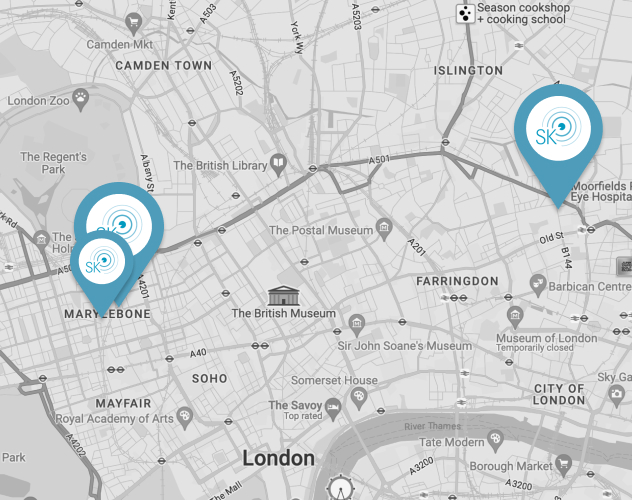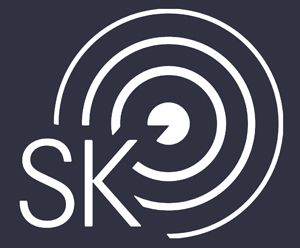
Cataract Service during and after COVID-19 pandemic
Globally, as of 4:21pm CET, 29 November 2020, there have been 61,869,330 confirmed cases of COVID-19, including 1,448,896 deaths, reported to WHO. The coronavirus SARS-CoV2 has been around for a year now, causing untold human suffering, challenges to healthcare systems, worldwide economic damage, and large-scale mental health problems. Ophthalmology services have not been spared. In this focus article, we discuss how cataract services have been disturbed, how we may recover and whether changes adopted now could continue to be of benefit beyond the pandemic. We shall work from first principles, occasionally stating the obvious.
In March 2020, we were instructed to cease all elective activity to release medical, nursing and facility capacity for dealing with the emerging pandemic. There followed several months of backlog of cataract operations already due to be scheduled, and referral of new cataract cases yet to be assessed. Activity has restarted at most eye units, but as there is a risk of person to person spread during healthcare episodes, most units are still not working to full capacity. Staff shortage from shielding, self-isolation, and illness, and insufficient space for physical distancing add to problems with capacity and footfall allowed.
Creating a safe environment for all
Let us first look at how to protect patients, their eyes, and staff during the pandemic. The purpose of mask wearing is not well understood. Whilst symptomatic COVID-19 cases should confine themselves, there are still asymptomatic and pre-symptomatic cases who are infectious, shedding virus particles through breathing, talking, shouting, singing, coughing, and sneezing. The prime purpose of face covering, or surgical mask wear, is to avoid inadvertently infecting others through contaminating fomites, direct droplets inoculation or indirect aerosol inhalation. As such, mask wear should be constant even in a private office unless nobody else enters the room to breathe aerosol laden air. Respirators such as FFP3 or N95, on the other hand, are primarily for self-protection. For these to be effective, a seal must be made between the respirator and the wearer’s face. Formal fit testing is mandatory, and the wearer must use the same model respirator and fit check every time a new respirator is worn. Male wearers need to be clean shaved as a beard or stubble will reduce seal. 1, 2
For some time, we have been wondering if procedures such as phacoemulsification, vitrectomy and intubation are aerosol generating. We often forget there is likely to be very small amounts of virus in the eye and the vibrations and cutting happen mostly intraocularly. The major sources of aerosol in theatres will be from staff and patients breathing, talking, coughing and so on, and aerosol can accumulate over the day if there is inadequate air exchange. Industrial hygienists are paying much attention to direction of flow and local exhaust ventilation (LEV) which can be applied by suction around patients’ faces under the drape, or at the slit lamp in clinic. 3 By carrying out adequate prepping with povidone-iodine, and avoiding misdirecting the patient’s breath to their eye during intraocular surgery or intraocular injection, mask wear by patient is often avoided. This should extend to the early post-operative period when the wounds are not yet fully sealed. 4 Where there are no windows or there is inadequate ventilation in clinic, air scrubbers or HEPA recirculation units can be deployed.
The clinical environment can be made safer for patients and staff through strict mask wear, breath guards at the slit lamp, local exhaust ventilation, and general ventilation through opening windows or carefully positioned ventilation ducts so a laminar stream is blown across the space between doctor and patient. Surface decontamination, hand hygiene, and strict no touching of face complete the protection. Some staff and indeed some patients are at particularly high risk which require extra caution. Risk factors include age, male gender, non-white ethnicity, obesity, and comorbidities. Staff at high risk may need to wear FFP3 or N95 respirators. With cataract assessment, the consultation, counselling, and consent can be done remotely, reducing face to face contact time to focussed examination and biometry. Patient information leaflets, videos, and cataract-specific consent form which includes same day bilateral cataract surgery all improve patient experience and quality of informed consent. Green stream services further reduce risks by means of staff and patient testing or a period of self-isolation on the patient’s part prior to attending assessment or surgery. As ventilation and patient flow are such important features, there is a case for building regional green stream facilities. 5
Dealing with the backlog – waiting list and referrals
When dealing with the backlog of patients on the waiting list, it is important to prioritise by need and not just by time waited. A simple questionnaire such as the Cat-PROM5 with just five questions is very effective. 6 Further, where there is a medical indication such as narrow angle, high pressure and risk of intumescence, such cases must be given the highest priority for surgery. Notes review may be necessary in some cases. Indeed, clinic or optometric review may occasionally be necessary to determine priority and whether there needs to be a change of surgical plan. The optometric workforce can help greatly with reassessment of cases already referred but not yet seen in the Hospital Eye Service. A simple national protocol and referral template based on visual disability as opposed to high contrast visual acuity should be developed, agreed, and adopted. Such information can be directly fed into hospital EPR reducing duplication of information gathering and burden on patient, their carers, and healthcare workers.
Given each department will only have limited theatre time, consideration should be given to having three session days and doing weekend work. This will stretch staffing and is not sustainable in the long term but can be maintained for a few months with fair remuneration as reward. Existing staff could also go to other sites including the private sector to operate but unfamiliarity with new a environment and being supported by unfamiliar theatre teams who may not be used to ophthalmic surgery could compromise patient safety. Both outsourcing and insourcing will increase cost per case and decrease patient safety. Risks can be decreased by choosing low risk cases only. Indeed, any qualified provider (AQP) and the private sector offering services to NHS patients do cherry pick routine cases which have a deleterious effect on the financial viability of local units and decrease training opportunities especially for the novice surgeon. Many argue it would be better for local NHS units to run such higher volume cataract centres. 7 There is a strong case for new regional green stream facilities for cataract surgery, which will be custom designed to optimise patient flow and ventilation. These new buildings will truly add capacity but will still need additional staff. Separately, for patients who wish to pay for their surgery, relinquishing their place on the NHS waiting list, it would be good for the government to allow top up payment so private surgery becomes more affordable.
Immediately Sequential Bilateral Cataract Surgery and Cataract Surgery by Appointment
Traditional teaching is very much against bilateral same day cataract surgery for fear of causing bilateral blindness through catastrophic complications. However, small incision cataract surgery is now very safe. Indeed, the mood is changing with NICE guidance on adult cataract surgery stating bilateral surgery should be considered for routine cases. Patient acceptance has also increased to 45% during the pandemic. 8 With fewer hospital and optometric visits, there is less risk of catching and spreading COVID-19. The College has provided joint guidance with the UKISCRS. 9 A webinar is available as an introduction to Immediately Sequential Bilateral Cataract Surgery (ISBCS).10
The advantages and disadvantages of ISBCS are summarised in Figure 1a and 1b. Pre-requisites for ISBCS include bilateral visually significant cataracts, informed consent, and surgeon, team, and hospital track records. For the novice bilateral cataract surgeon, only routine low risk cases should be offered ISBCS. It is only on satisfactory completion of the first eye operation that a definite decision is made to proceed with operating on the second eye. If the first operation is prolonged or there is a complication, then the second eye procedure is aborted. Finally, the two eyes are treated as completely separate operations with rescrubbing, change of gowns and gloves, and the two eyes will have two separate trolleys of instruments from different sterilisation cycles, with anything entering the eyes coming from different manufacturers or bearing different batch numbers.
Critics argue that two queues will be created with some patients waiting for first eye surgery whilst others get both eyes done. As more eyes of fewer patients can be done each operating list, there will be an initial worsening of the waiting list. However, after a few months the waiting list will improve as patients will not need to return for second eye cataract surgery. Competent trainees can operate on the second eyes of ISBCS patients. Senior, proficient, trainees can operate on both eyes. Theatre nurses have extra work to prepare parallel batches of sterile instruments, but manufacturers are planning to supply left eye packs and right eye packs. With the above safety protocol, the risk of bilateral endophthalmitis will be exceedingly rare, perhaps 1 in 200,000 or much lower. Biometry error is also rare with partial coherence laser interferometry and latest IOL formulae. Bilateral cystoid macular oedema can be a problem as not all cases resolve satisfactorily.
Cataract Surgery by Appointment is the ultimate form of day case surgery, with patients self-preparing for surgery, bypassing the ward or day case unit, and presenting to the operating theatre at staggered appointment times. 11 This means a patient can turn up for their surgery and be home following a cup of tea after just 45 minutes for unilateral surgery or an hour after ISBCS.
Good patient flow is about simplifying the patient journey and reducing duplication of steps or having unnecessary steps. Cataract EPRs should be seamless from optometric referral to cataract assessment clinics, and from operating record to discharge summary and electronic prescription. The circulating nurse acting as scribe decreases fallow time between patients.
Post-pandemic
It is hoped that simplified and more efficient pathways can be retained when the pandemic subsides. Hospital visits can be reduced both in terms of number of visits and time spent at cataract assessment clinics and on the day of surgery. Patients can be better informed with detailed patient information booklets and videos improving their knowledge of what to expect on clinic day and on the day of surgery and how their eyes will recover. Simplified and unified electronic documentation will ease the life of optometrists, nurses, and doctors.
We should continue to train the next generation of cataract surgeons, providing graded challenge and spiral learning. Video recording of all cases, step by step critique and feedback, will ensure maximal learning from each case. 12 For trainees or trainers whose surgery has become rusty, for those who lost confidence, and for those whose mental health has been affected by COVID-19, mutual support and talking openly can help. Surgery is like riding a bicycle, the skill once learnt is never forgotten but requires practice. A dedicated trainer can take those who require support through wet lab and simulator session and teaching with surgical videos. 12
Figure 1a
| Advantages of ISBCS |
|---|
| One referral |
| One consultation |
| One pre-operative assessment |
| One visit for surgery |
| No binocular imbalance |
| One visit to optometrist |
| One pair of new glasses |
| Health economics |
| Reduced travel, time off for patient and carers, reduced carbon footprint |
| COVID-19 |
Figure 1b
| Disadvantages of ISBCS |
|---|
| Taking a risk with both eyes at the same sitting |
| Double discomfort during surgery and post-operative recovery |
| Some patients may not be able to manage putting postoperative drops in both eyes |
| Potential financial loss to surgeon and institution |
Acknowledgement: We thank Hasan Naveed for proofreading our manuscript.
Are you suitable for vision treatments?
They aren’t suitable for everyone.
Find out if you could benefit from this life-changing surgery by taking the quick self-suitability quiz below:
Our most popular procedures
What our patients say…
★ ★ ★ ★ ★
“Had cataract surgery on both eyes simultaneously last week and, 7 days later, the vision is brilliant. I can see to read as well, including small print smaller than I expected! I can see car number plates at the end of the road. Everything was excellent, and I could not have wished for anything better.”
★ ★ ★ ★ ★
“My cataract surgery was a great experience. My vision is now brighter; overall, I felt informed and secure throughout, and I am glad I did it and definitely recommend Sharmina Khan. Everyone at the hospital was great, very professional, friendly, and treated me very nicely. During the surgery, I didn’t feel any pain at any time. The recovery was very easy and smooth.”
★ ★ ★ ★ ★
“I was very nervous about having cataract surgery, as I have other medical conditions in both eyes. Ms. Khan allayed all of my fears and explained everything in detail to me. Now that both surgeries are completed, I couldn’t be more pleased with the results. I’m seeing things I’ve not been able to see properly in years. Amazing!”
★ ★ ★ ★ ★
“Ms. Sharmina Khan is an outstanding eye consultant. She took the time to listen attentively to my concerns and provided thoughtful, easy-to-understand explanations. Her depth of knowledge and ability to address my questions left me thoroughly satisfied with her services. I highly recommend Ms. Sharmina Khan to anyone seeking expert eye care and guidance.”
★ ★ ★ ★ ★
“I had cataract surgery in both eyes. The procedure was painless, easy to understand, and swift. My anxiety levels were very low, and recovery was quick and easy. I was just so relaxed. My vision was like being Wonder Woman. It was so clear, and it was like someone had cleaned a window. Now, my vision is fine for reading, computer use, and using a sewing machine.”
★ ★ ★ ★ ★
“Extremely happy with vision following cataract surgery. I wish I had it done sooner. The colors I am experiencing, I didn’t know existed. The experience was really good; it wasn’t much painful. I really enjoyed the sandwiches afterward. When I got home, I saw every little mark on the walls and now am cleaning up!”
★ ★ ★ ★ ★
“6/5. Incredibly impressed with Miss Khan’s bedside manner and operation and consultation. I have had the Synergy toric lens and have experienced a dramatic increase in distance vision. Now, I am able to read stuff on the television perfectly, and reading small print, I can now read the back of a tin of beans!”
★ ★ ★ ★ ★
“Miss Khan was very professional, and both my eyes had trifocal intra-ocular lens implants (toric in the left). The risks and benefits were explained to my satisfaction, and I was very nervous. However, the procedure and the recovery were painless. I now have perfect unaided vision in both eyes and would recommend Miss Khan, 10 out of 10.”
★ ★ ★ ★ ★
“I’m so pleased I sought Sharmina Khan’s help. My dry eye problem was debilitating. I turned up to my appointment in a very worried state and left reassured. My eyes are now vastly better. I feel in good hands. Thank you!”
★ ★ ★ ★ ★
“I have had Lipiflow a few times now, and I couldn’t do without it because it really gets rid of my gritty and sore eyes for months at a time. Lipiflow has helped me go back to doing normal things without getting frustrated, like driving, tolerating air conditioning, generally tolerating different humidity levels, and not feeling like I need to use eye drops all the time. I would highly recommend it.”
We have replaced the images of real patients who provided these testimonials to protect their privacy.













